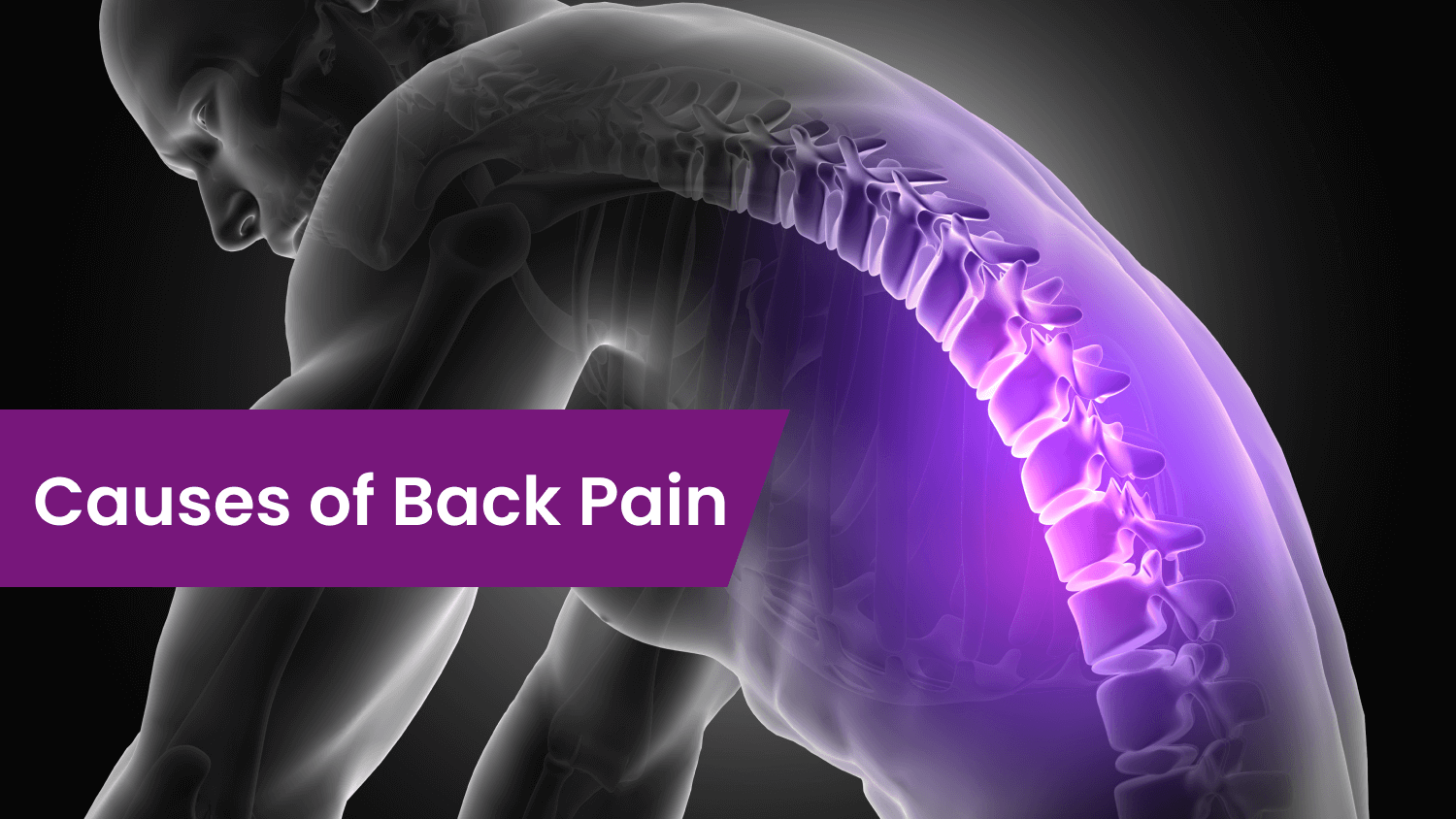Lesser-Known Causes of Back Pain
- Admin
Back pain can stem from a myriad of causes, with symptoms and descriptions as diverse as the causes themselves. While muscle spasms often top the list as the most prevalent cause, the spine, like other parts of the body, can be vulnerable to a range of issues, including infection. Here are some of the commonly encountered causes, along with two less common contributors, to back pain.
A significant number of patients attribute their back pain to factors like poor posture, aging, and injuries, there exist less common causes of back pain that can be equally incapacitating. It is crucial to recognize these uncommon causes of back pain and understand preventive measures or treatment options.
Common Causes of Back Pain
Sprain/Strain
A spinal sprain or strain can occur due to various circumstances, such as falling, employing improper body mechanics (e.g., lifting and twisting simultaneously), or being involved in a car accident. These injuries are typically associated with significant pain and may temporarily restrict movement.
Sacroiliac Joint Dysfunction
Sacroiliac Joint Dysfunction occurs at the juncture where the lower part of the spine meets the pelvis, playing a crucial role in supporting the weight of the upper body and legs. Inflammation or improper functioning of this joint can lead to lower back pain that radiates down to the legs. While often mistaken for conditions like sciatica or other common back issues, it is, in fact, attributed to the sacroiliac joint.
To alleviate this type of pain, physical therapy and targeted exercises focusing on the muscles around the joint can be effective. In more severe cases, corticosteroid injections may be recommended to reduce inflammation and provide pain relief.
Fibromyalgia
Fibromyalgia is a chronic pain disorder impacting muscles, tendons, and ligaments across the entire body. It often induces widespread pain, fatigue, and disturbances in sleep patterns. Given the abundance of muscles in the back, this area is frequently affected by the condition. Additionally, there is a risk of arthritis in the affected regions, contributing to wear-and-tear and further exacerbating pain.
Spinal Tumors
Spinal tumors represent another less common yet significant cause of back pain. These tumors have the potential to develop within the spinal cord or the surrounding tissues, leading to compression and nerve damage. Symptoms associated with spinal tumors encompass back pain, numbness, weakness, and challenges in walking.
Ankylosing Spondylitis
Ankylosing spondylitis is a form of arthritis primarily impacting the spine, prompting the fusion of bones and resulting in persistent pain and stiffness in the back. It tends to be more prevalent in men than women and frequently commences in early adulthood. Symptoms are typically more pronounced in the morning and following periods of inactivity.
Emotional Stress
Emotional stress represents an atypical but notable contributor to back pain. Stress can induce muscle tension and elevated inflammation levels. Adopting stress management techniques, such as practicing yoga or engaging in deep breathing exercises, can be beneficial in mitigating the impact of emotional stress on back pain.
Sleep Deprivation
Adequate sleep is essential for overall health and well-being, and it also plays a significant role in preventing back pain. Insufficient sleep can contribute to muscle tension and heightened stress levels, both of which may result in back pain.
Ensure that you prioritize sufficient sleep each night. According to the National Sleep Foundation, adults are advised to target 7-9 hours of sleep per night for optimal health.
Unhealthy Diet
A diet rich in processed foods and sugar has the potential to induce inflammation throughout the body, presenting another uncommon cause of back pain. Optimal dietary choices involve embracing a balanced diet that includes ample fruits, vegetables, whole grains, and lean protein. Additionally, incorporating anti-inflammatory foods like fatty fish, nuts, and leafy green vegetables can contribute to maintaining overall health and potentially alleviate back pain.
Wearing footwear with High Heels
Wearing high heels is sometimes regarded as an unusual factor contributing to back pain, but in reality, they can impact the alignment of the spine, resulting in various degenerative changes over time. High heels exert considerable pressure on the feet and calves, leading to muscle tension that may contribute to lower back pain. To minimize the risk of back pain associated with high heels, it is advisable to limit the duration of wearing them or opt for flat shoes. Selecting footwear with proper arch support and cushioning can assist in maintaining good posture and alleviating pressure on the lower back.
Uncommon Causes of Back Pain
Spinal infections represent a less frequent cause of back pain. These infections can be bacterial or fungal, affecting various areas such as the intervertebral discs, spinal bone (osteomyelitis), spinal cord, or the region around the nerve roots (epidural space).
Spinal tumors come in benign (non-cancerous) or malignant (cancerous) forms. These abnormal growths, known as neoplasms, can either be primary, originating within the spine (in a vertebral body, nerve roots, or spinal cord), or metastatic, having spread from another part of the body, such as the breast, kidney, or lung.
Search
Categories
Popular Tags
Recent Post
-
Full endoscopic fellowship 2026

Fellowship in full endoscopic spine surgery under Dr. Prasad Patgaonka...
Read more -
From sciatica to disc problems: spinal diseases treated with endoscopic surgery in surat

Spine pain can quietly affect every part of your life—from walking and...
Read more -
Top spine hospitals in surat offering endoscopic & minimally invasive surgery

Back and spine problems can affect your daily activities, mobility, an...
Read more -
Spine health matters: trusted surgeons and specialists in surat

Your spine plays a vital role in supporting your body, enabling moveme...
Read more



